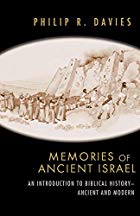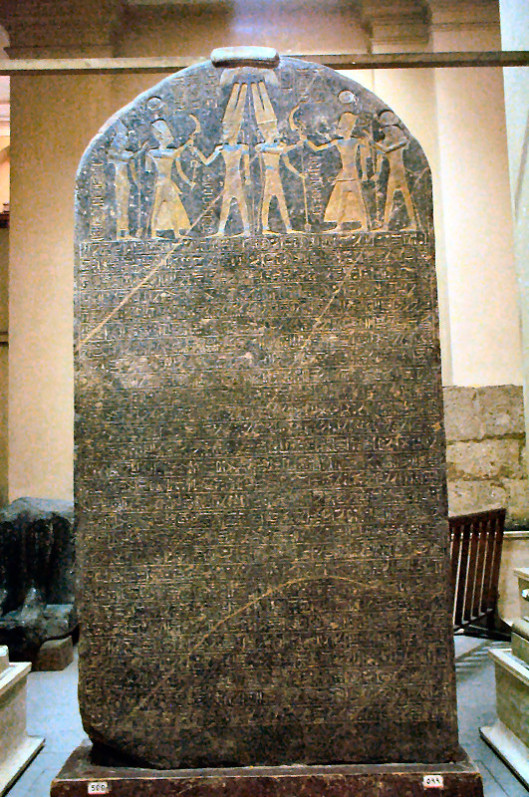From Memories of Ancient Israel: An Introduction to Biblical History — Ancient and Modern, by Philip R. Davies. . . . . .
1 and 2 Kings detail corresponding years of ascensions and deaths between kings of the northern kingdom of Israel and the southern kingdom of Judah, and the lengths of reigns of each. The refrain goes like this:
In the twenty-seventh year of Jeroboam king of Israel, Azariah the son of Amaziah, king of Judah, became king. He was sixteen years old when he became king, and he reigned fifty-two years in Jerusalem. (2 Kings 15:1-2)
It’s all very precise. So we can be confident that the authors were not speaking in rough generalizations when they said David ruled for 40 years as did his son Solomon. Their interest in detailed matching informs us that they were interested in precision. So we can accept that when they said 40 years they meant literally 40, not some vague “generation”.
But the scribes who authored and edited these books never expected a generation would come when every Tom, Dick and Harriette would have a cheap copy and spare pen and paper and the ability to take time to work out the details of how the reigns looked in a nice chart or table.
Probably most bible-buffs have tried it and found there are problems. When one plots on paper the years each king came to power in relation to his neighbouring dynasty, and the length of each reign, there are gaps. The figures don’t add up.
Take the king Amaziah and his successor Azariah (also called Uzziah for some reason left unexplained):
In the second year of Joash the son of Jehoahaz, king of Israel, Amaziah the son of Joash, king of Judah, became king. He was twenty-five years old when he became king, and he reigned twenty-nine years in Jerusalem. (2 Kings 14:1-2)
Joash of Israel happened to reign for 16 years (2 Kings 13:10) and was succeeded by Jeroboam II. Jeroboam’s 27th year is said to be the starting year of Azariah (see the 2 Kings 15 citation above). But if Azariah’s father reigned 29 years from the second year of Joash’s 16 year reign, then Azariah should have begun his reign around Jeroboam’s 15th year. But no, we are told in 2 Kings 15:1-2 that it began in Jeroboam’s 27th year.
There is a gap of twelve years here. No king seems to have ruled Judah in the twelve years between Amaziah’s death and Azariah’s ascension.
So an easy solution is commonly applied to explain such discrepancies. Co-regencies. If we can juggle the figures so that certain reigns overlap, and certain ascension years are really the years a prince began ruling with his father before assuming sole authority. That can be done to make the figures work out. But the trouble with this as a solution is that there is no evidence that Israel and Judah had any custom of co-regency. It is simply a made up ad hoc guess. (The precise numerical details applied by the authors would, moreover, suggest that they were conveying precise times and years, and were not likely to be so slapdash as to omit vital details like co-regency data if it did exist. Further, texts such as 2 Kings 8:16 and 15:5 are shown on close examination not to point to co-regency as is sometimes casually — wishfully? — assumed.)
There is another very strange detail in the chronology of the kings:
Saul was a year old when he began to reign, and he reigned two years over Israel. (1 Sam.13:1)
“This is what the canonical (Masoretic) Hebrew text says.” (p.22) Other manuscript evidence either omits it or attempts to re-write it into something more intelligible.
But when we add the total years of the kings of Judah as given in the sometimes seemingly gap-ridden narrative, we come a step towards understanding what the authors/redactors of these figures were thinking.
When totalled, the period from the building to the destruction of the first temple is 430 years.
By keeping Saul’s reign short as writ, the period from the Exodus to the first temple is 480 years.
Most readers of the Bible are familiar with these numbers. But what is their significance in the larger scheme of things?
Counting back from the Exodus to the birth of Abraham we total 720 years, hence 1200 years from the birth of Abraham to the First Temple.
But to cut to the chase (with an acknowledged debt to Thompson):
Creation to the Flood: 1656 years
Creation to the birth of Abraham: 1946 years
Creation to the Exodus: 2666 years (= two thirds of 4000)
Creation to the First Temple: 3146 years
Creation to the destruction of temple: 3576 years
Creation to the edict of Cyrus (538 b.c.e.) to build second temple: 3626 years
and finally finally, by adding a “remaining” 375 years . . .
Creation to the rededication of the temple (163 b.c.e.) by Judas Maccabee: 4000 years
(The Book of Jeremiah contains a different chronology from this one, since it assigns 70 years of exile instead of 50. There is evidence that different schools of redactors have attempted to introduce varying chronologies.)
The artificial design of the numbers of kings and their reigns in the biblical history is further underscored by the fact that
The books of Kings list twenty kings after Solomon in each of the kingdoms of Israel and Judah. Now, the kingdom of Judah lasted over a century longer than Israel, which makes this equivalence very curious, not to say suspicious. (p.26)
(Davies also observes that in each dynasty it was “coincidentally” the 7th reign that introduces an evil woman.)




